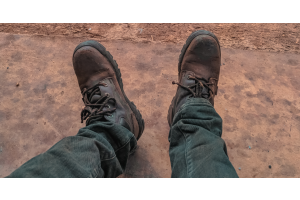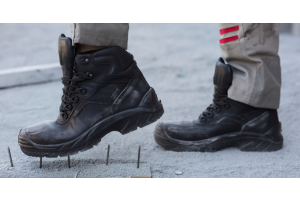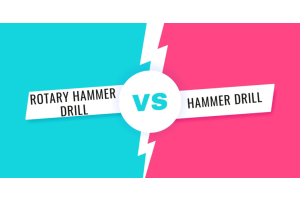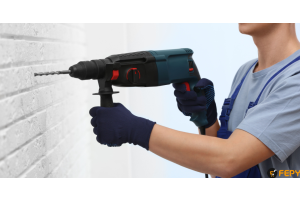Seo Fazail
-
February 11, 2025
aily jobs, especially for hard physical work like construction, need safety shoes. These shoes are our silent protectors. They guard our feet from different hazards.
-
February 10, 2025
Whether on a construction site or tackling a DIY project, staying safe matters most. Safety shoes play a crucial role as great personal protective gear. However, people often get confused between S1P and S3 safety shoes.
-
February 10, 2025
Workplace safety, especially in construction, takes our thoughts of hard hats and gloves. However, a major personal protective equipment (PPE) often gets missed - safety shoes.
-
July 02, 2024 1
Gypsum board access panels have become essential to today's construction in the UAE. These unique panels combine purpose with beauty, perfectly matching the UAE's emphasis on excellent design. Gypsum board access panels shift the way you reach concealed utilities, all while ensuring your area remains visually appealing.
-
April 08, 2024 1
Are your cutting projects taking too long, costing too much, or leaving you with subpar results? The right cutting disc allows you to slice through the toughest materials with ease and precision. In this blog, we explore how to choose the right cutting disc for your needs.
Let's break down the top 10 factors to consider:
10 Factors to Consider When Choosing the Right Cutting Discs
1. Disc Type
The type of cutting disc you use lays the groundwork for your project's success. Each type excels in specific tasks and materials. Understanding these distinctions guarantees a safe and successful project with the best-cut quality.
These are three common metal-cutting disc types:
Abrasive Discs:
-
April 06, 2024 1
Perfect tile adhesive mix is crucial to a successful tiling project. An accurate mixing of tile adhesive is essential to ensure a long-lasting bond and a smooth finish. The intricacies of selecting the tile adhesive, mixing carefully, and applying the adhesive are critical for optimal bonding. This guide will prepare you to navigate these steps with confidence.
10 Steps to Mix Tile Adhesive for Optimal Bonding
These are the ten significant steps in mixing tile adhesive and the best practices for creating the perfect foundation:
-
April 01, 2024 2
Tiling transforms spaces with its beauty and unmatched durability. Whether you're an experienced professional or a tiling DIYer, understanding the art of adhesive application is critical for a flawless finish. In this guide, we will walk you through the process of applying tile adhesive correctly to ensure long-lasting results.
How to apply tile adhesive correctly?
It is the 10-step process to apply tile adhesive correctly that ensures your tiles stay firmly in place for years:
Step 1: Prepare Your Space for Perfection
Step 2: Assemble Your Tiling Toolkit
Step 3: Create the Perfect Adhesive
Step 4: Spread the Adhesive with Precision
Step 5: Employ Spacers for Uniformity
Step 6: Verify Alignment for a Flawless Finish
Step 7: Clean Excess Adhesive
Step 8: Allow
-
March 20, 2024 11
The UAE's scorching heat and humidity demand packaging that can withstand harsh conditions. Polythene sheets rise to the challenge, offering a handy and reliable solution. These versatile sheets act like protective shields, safeguarding your products during storage and transportation. They're also incredibly cost-effective, making them a champion choice for businesses across the UAE.
11 Reasons Why Polythene Sheets Are Essential for Packaging in the UAE
-
March 18, 2024 6
Masking tape is often a favourite choice, whether it's large-sized construction projects or your DIY projects. But its ease of use usually comes with a sticky price tag – the stubborn residue that clings to glass long after the tape is gone. So, is there a solution to get rid of masking tape residue? Yes, there are. This guide unveils nine simple solutions to remove masking tape residue from glass.
How To Remove Masking Tape Residue from Glass: 9 Simple Solutions
-
March 16, 2024 1
Construction relies heavily on cement, but its effectiveness depends on proper storage. Because cement is hygroscopic, meaning it absorbs moisture from the air, it can harden and become unusable if not stored correctly. Here's a breakdown of essential practices to ensure your cement stays fresh and delivers optimal strength for your project.
How to Store Cement: 13 Key Strategies
- Guarding Against Moisture
- Storage Duration and Strength
- Designated Storage Sheds
- Humidity Under Control
- Guarding Against Temperature Fluctuations
- Proper Cement Bag Handling
- Optimized Storage Arrangements
- Organized Storage for Efficient Retrieval
- Guarding Against Contamination
- Minimizing Pollution During Use
- First-In, First-Out Strategy
- Leftover Cement Management
- Monsoon Season Protection





